The story of the Shelby Cobra in 5 cars
At a time when engine swaps were reserved for hot rodders and outlaws, Carroll Shelby bolted a V-8 into a little British car and created a ’60s icon. A lot of us know the basics of the Cobra’s story but rather than rehash the same few talking points, we picked five cars that tell the brief, fascinating history of the Shelby Cobra.
The original
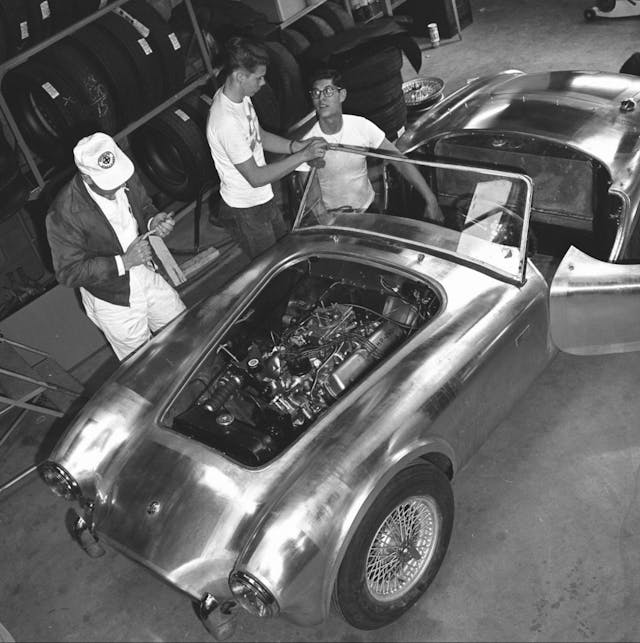
The idea for the Cobra was not that crazy: Take the lithe, simple AC Ace and tuck a V-8 under the hood. Choosing which engine came down to Shelby’s business sense and Chevrolet’s lack of interest in supporting the project. The final choice—a Ford—was likely an easier fit considering the distributor location, but Shelby and his team were problem solvers who could have easily found a work-around, had they preferred the Chevy mill.
While many think Shelby made only two versions of the Cobra—those powered by a 289-cubic-inch V-8 and those by a 427-cubic-inch V-8—the reality is more nuanced. The first cars were fitted with 260-cubic-inch Ford V-8s backed by Borg Warner four-speed manual transmissions. Starting with chassis code CSX2000 in 1962, the first 75 cars got the smaller-displacement V-8. Each of the remaining 51 early-production cars got a larger, 289 cubic-inch engine.
The driver’s choice
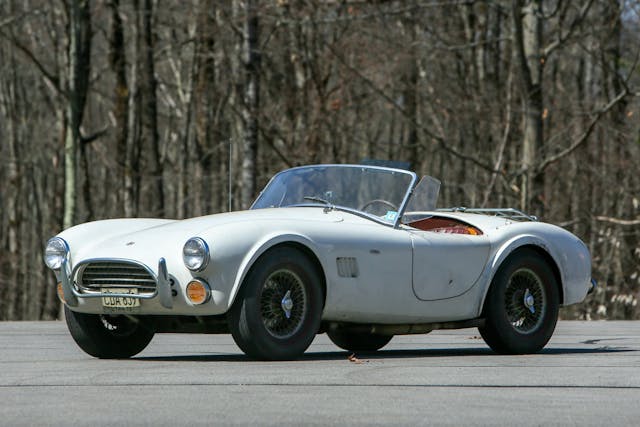
The slight increase in engine displacement was a great choice, and it created what Cobra aficionados say is the best car if you really want to drive. Look no further than The Barn Find Hunter himself, Tom Cotter, who has racked up hundreds of thousands of miles in his 289-powered car.
The 289 was also a force to be reckoned with on the racetrack. They were routinely hassling Ferraris and taking lunch money from Corvettes. On track the cars had a balance—if you can call an overpowered British roadster balanced at all—that allowed drivers to shine. Sadly, those racers were shining from sweat due to their car’s lack of a roof. That problem brought in Peter Brock and his team, who together created …
The specialist
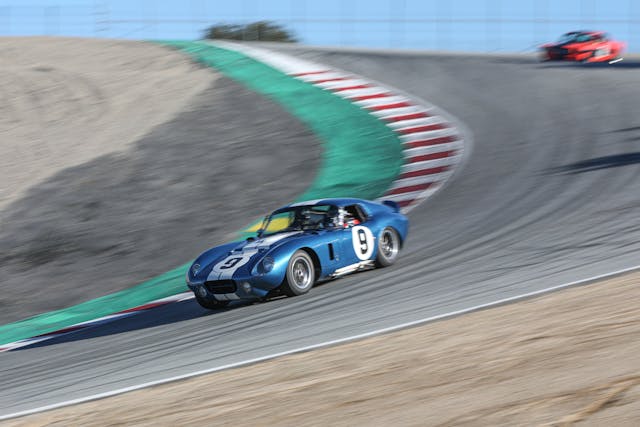
Brock and his team were less worried about sunburns on drivers’ necks than the aerodynamic disadvantages of the roofless design. Even as the Ford 390 V-8s were finding their way into Mark II Cobras, the aerodynamic drag of the car’s body was limiting the Cobra’s performance in a straight line. The result of the project was the Daytona Coupe, which added a roof and Kamm-back rear to create the first enclosed Cobra in 1964.
The Daytona name came from one of the tracks where this new roofed car won. Daytona Coupes also won at Le Mans, Sebring, Monza, and set endurance speed records, proving the combination of aero and power created a formidable race car. The shape of the Daytona coupe even solved the high-speed stability issues of the roadster. Aerodynamics, however, were not Carroll Shelby’s thing. He liked horsepower, and he returned to the roadster shape to create …
The icon
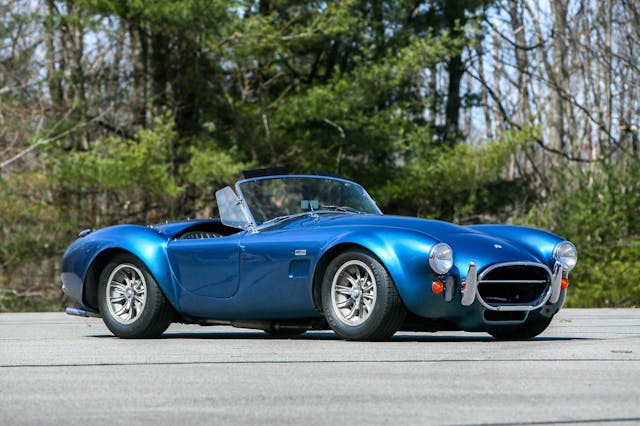
Say “427” in the right crowd, and everyone collectively says “Cobra.” It’s a Shelby fan’s version of Marco Polo. The Mark III was the product of Ford, AC, and Shelby working together to create a car that fit the design brief from Shelby and debuted in 1965. Much of the hardware on the earlier cars was turned up to 11 in order to fit the 427 side-oiler big-block Ford, an engine that had impressed Shelby in racing versions of the Ford Galaxie.
Spotting a 427 Cobra is easy compared to the earlier cars: The radiator opening is larger, as are the fender flares, which were enlarged to fit new wheels and tires. Underneath, the tubing comprising the frame increased in diameter, from 3 inches to 4. The traverse leaf springs in the suspension disappeared in favor of coil springs at all four corners. There were two versions of the 427 available: The standard ones that sported 425 hp and the competition cars that put out a ground-pounding 485 hp. That wasn’t enough power for Shelby, though, and his lust for more created the final form of the Cobra.
The absurd

It’s difficult to take something that is already over the top and make it wilder, but Shelby used a competition Cobra to do exactly that, usability be damned. The list of what makes a car streetable is short to a guy like Shelby: mufflers, chrome bumpers, and a windshield. Oh, and two Paxton superchargers, a subtle little upgrade. The rumor mill says 800 hp was churning under the hood of the “Super Snake,” and that the cars were nearly undriveable, even when fitted with an automatic transmission. Only two were created. Only one, chassis CSX3015, lives today; the other was driven over a cliff and into the Pacific Ocean.
Is that the entire history of this unique American sports car? Not hardly, but this list should give you an idea of why the Cobra became and has stayed an icon of the car world—possibly the most duplicated or copied car of all time and a dream for many enthusiasts. The Cobra stands as a car that could only have been born when it was. Something like it will likely never happen again—no matter how run-of-the-mill an engine swap has become.
***
Check out the Hagerty Media homepage so you don’t miss a single story, or better yet, bookmark it. To get our best stories delivered right to your inbox, subscribe to our newsletters.
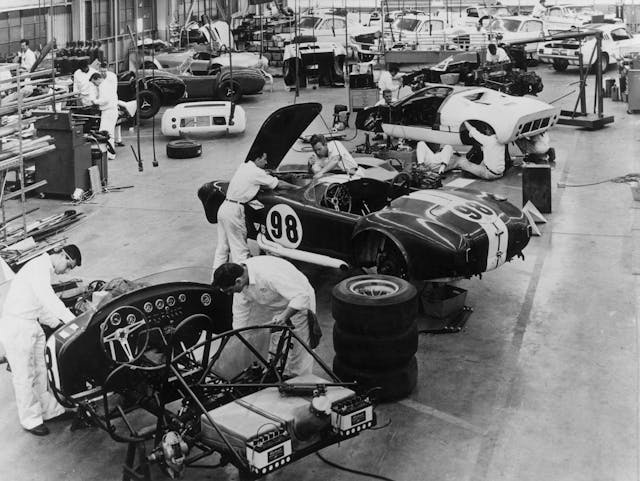


Interesting way of looking at the Shelby Cobra story. Also informative – coupla things I hadn’t heard before. Nice job, Kyle!
One thing you didn’t mention, was that most of the standard 425 hp street cars were actually the 428 CJ engine
Very interesting article, really enjoyed it
About 100 cars, the CSX32xx series, received 428 engines. The remaining 200 + cars received various 427 engines.
And, if I heard Tom Cotter correctly, Ford was furious and forced Shelby to replace the 428s with 427s (the 427s produced more power).
Yes, not that Shelby willingly admitted it!
Remember kids, the hearts of these killer vehicles were plucked from the Falcon, Fairlane, Mustand and Galaxie.
Well, not the Falcon. The largest engine Ford put in that car was the 260 V8, and the Cobra was well beyond that by the time the Falcon got it. Besides, the Cobra 427 bore little resemblance to the Fairlane or Galaxy 427s.
Being of English dissent, I’ve loved the Cobra since I was a kid.
However, not being born rich, I built 2 FFR’s. One Cobra and one Daytona coupe, They both are powered by Shaffroff ” 582 ci.” GM based. At the car shows, when people ask,, I grin and say ” maybe Carroll would have done that if Chevrolet had not been so short sighted ” Great article Kyle.
I would grin back at you, because I was there in the 60s . . . BB Chevies were ok at the drags, but rarely finished a race at our local road race track. They didn’t have much success in NASCAR either.
Shelby made the right choice . . . the 427 Ford won LeMans twice and the Euros banned it. GM didn’t win LeMans till the 21st century.
The number of Cobras produced was long thought to be the first 75 cars. That has not been proven to be incorrect. The exact number is unknown but is in the area of 50. A lot depends on who completed the car, Shelby American or Ed Hugus at European Cars in PA.
The Shelby Cobra is my all time favorite car . The styling will still be popular 100 years from now. I had a replica, finally built in my late 60’s . A blast to drive and many thumbs up. The wife was afraid to ride in it , the same reason she won’t ride on the Harley. I miss that car.428 5spd.
I remember reading, that at 100 mph plus, the roadster had all the aerodynamics of a brick! But what fun it must have been to get there.
Agreed, Happy. In hindsight, a full windshield on any roadster is a giant front spoiler. Thats why the Italians created the no-windshield Barchettas which require a full face helmet to drive. Then assuming a tonneau, only the driver’s head is the “spoiler”.
Well done article Kyle. Thank you. 25+ years back, an acquaintance owner of a replica stated there were 11 repops to each original Cobra. Wonder what the number is today?
There is another Cobra that should be mentioned. AC produced leaf spring Cobras to sell as complete cars to the rest of the world other than the USA. These used the prefix COX or COB to denote LHD or RHD. AC also produced the coil spring chassis using the 289 instead of the 427. This was known as the AC 289 Sport. Only about 27 were produced, most in RHD. This is IMO the best of both worlds. The improved chassis with a lighter-weight engine made it a very well-balanced car to drive.
“Each of the remaining 51 early-production cars got a larger, 289 cubic-inch engine.” For clarity, you are referring to the first 125 cars that were worm & sector steering. In total, there were 655 leaf spring cars, with perhaps 50+ receiving 260 ci engines.
The 260 2 barrel unit of Herbie Hancock was interesting to watch on Barn Find Hunter.
https://www.youtube.com/watch?v=oSa1ImVdoT4
Shelby gave him a 4 barrel and manifold, but it was never put on. Herbie Hancock’s is the oldest original owner Cobra out there.
“Even as the Ford 390 V-8s were finding their way into Mark II Cobras,” Actually one 390 block was fitted to a Cobra, CSX2196. The rest of the big blocks were 427 or 428 ci.
Thank you, Jim
Nice to learn a little more about these cars.
Interesting first picture. We used to ride our Stingray bicycles about 10 miles to look into the hanger to see all the Cobras and GT40s. That picture is exactly what we saw.
My parents owned a full service laundromat on La Brea Blvd in LA. We were just down the street from the Mustang/Cobra sales office. Jerry Titus worked there. Also, our front door lined up with the downshift point when they were taking potential buyers on a “road test.” Being in High school at the time, I could hear the cars coming and would stand at the doorway when they would do the downshifting and let the engine roar! They were willing to sell me a Cobra for around $6,000 but my dad put a quick stop to that!
A friend has an immaculate Superformance Daytona with a Roush engine.
It is something to experience.
I once read that there are more Cobra replicas then there are Cobras.
That is correct. And the exceptional reproductions (Factory Five, Backdraft) are in all ways better cars than the originals. Sacrilege? No, fact. You want the original, barely controllable real 427 Cobra experience, fine. But you’re missing what 50+ years of engineering and technology can do for an iconic design. I was privileged to drive a Factory Five 289 Cobra repop. It had a modern 5.0, a Tremec 6spd, and in every metric- fit, finish, power, handling, reliability, tuneability, safety- it was vastly superior to an original. And was still a terrifying thing at 8/10ths.
Me? I’d like a Factory Five Daytona Coupe reproduction with the flat crank Voodoo motor out of a late Shelby 350, Tremec 6spd, and out the rear exhaust instead of the tri-y side pipes (a flat crank V8 doesn’t benefit from tri-y exhaust routing). I’d be giving up my GTO roots, but. But. Sigh.
Having been a CalClub racer from 1963 – 1966, competing in a 1959 Corvette, I vividly remember the 289 Cobra. Everyone forgets that the Cobra official weight was 1990 lbs and the Stingray was 3060 lbs. The Cobra had disk brakes and the Corvette drum brakes in 1963 & 1964. Unfortunately GM nixed the 2,100 Corvette Grand Sport 😉